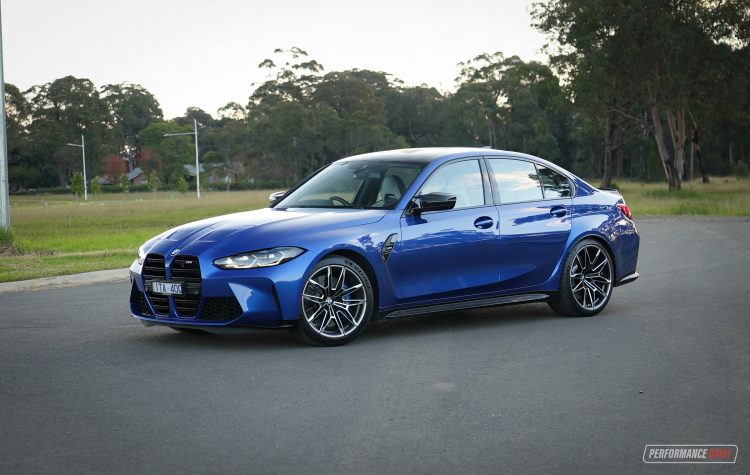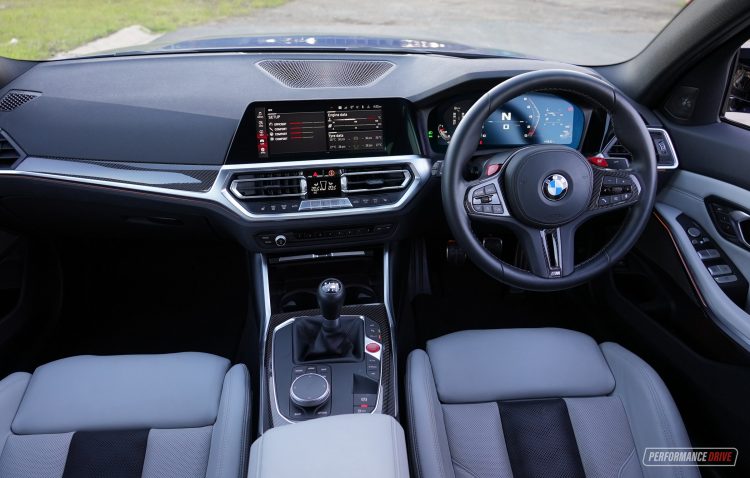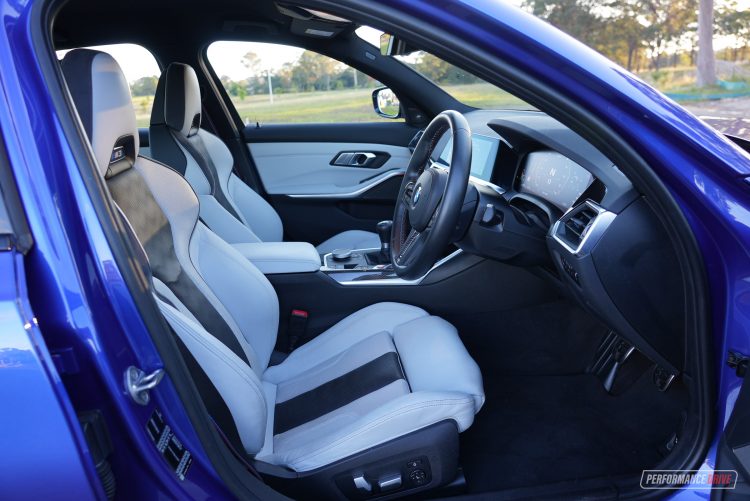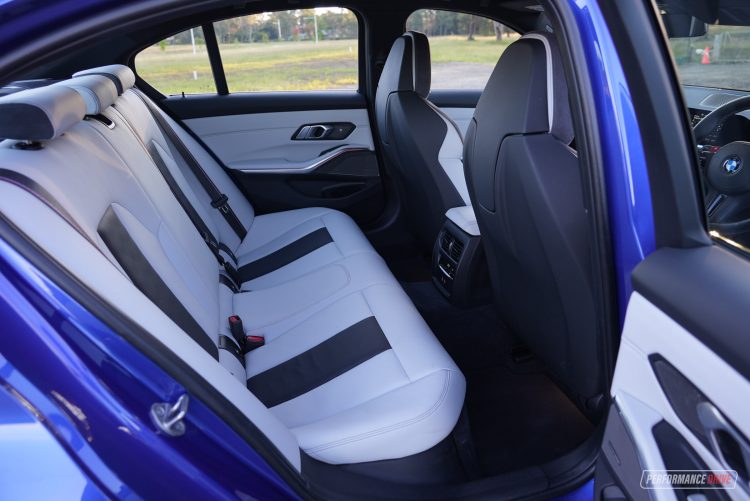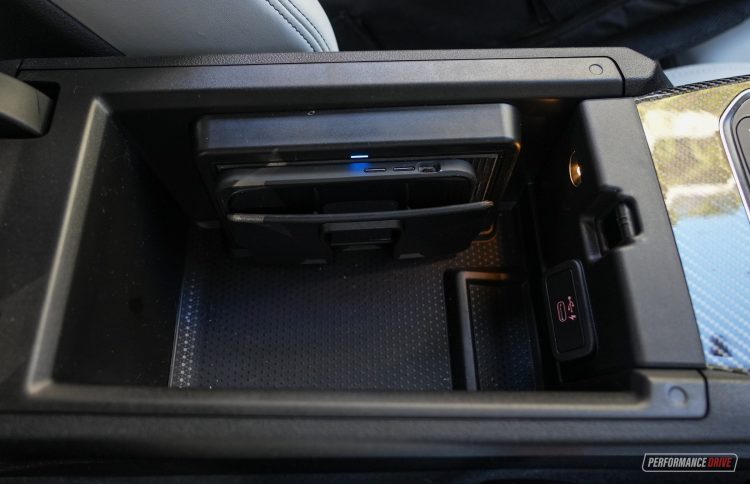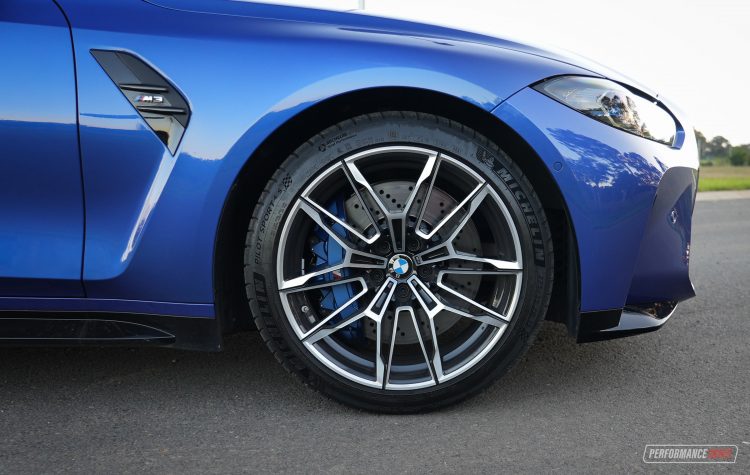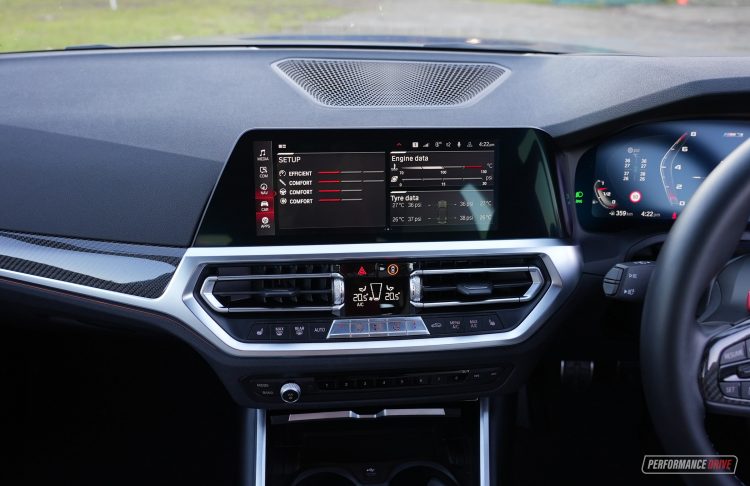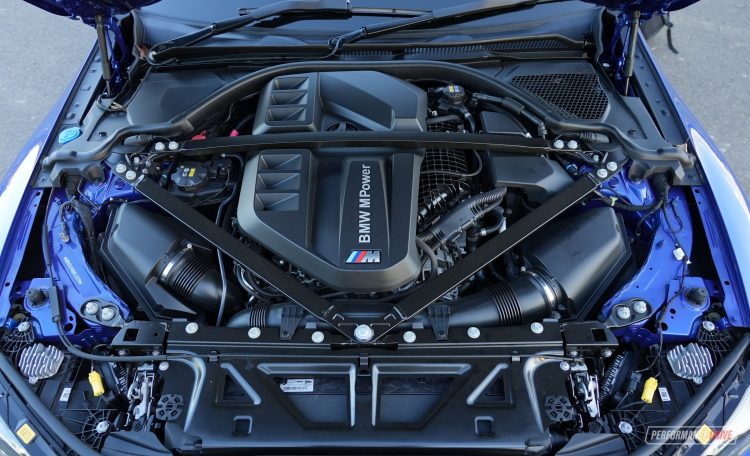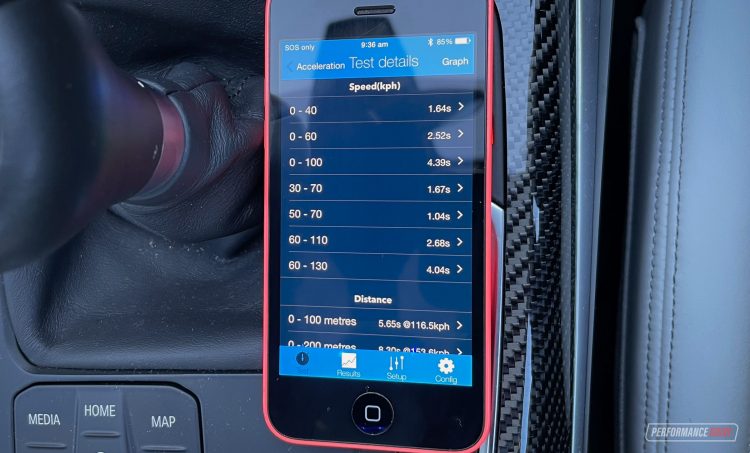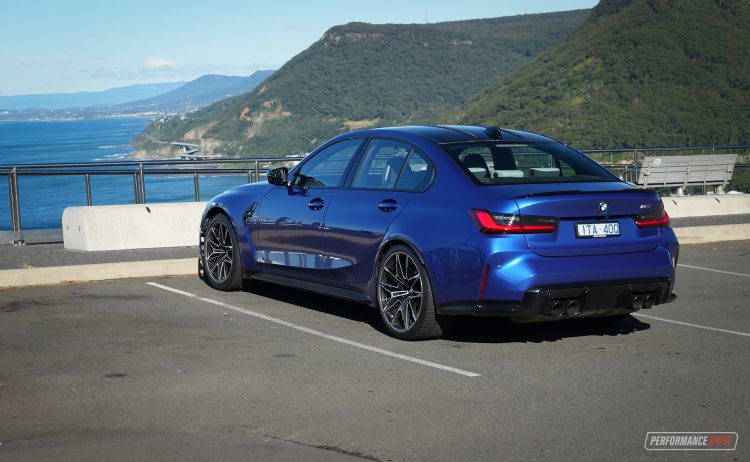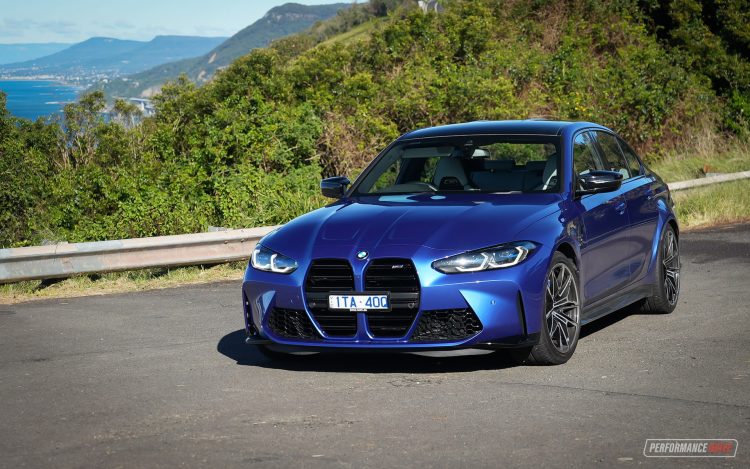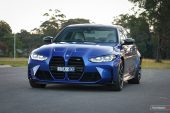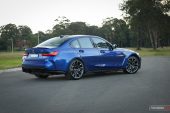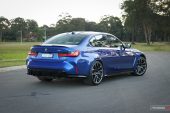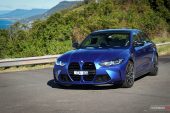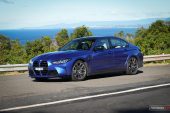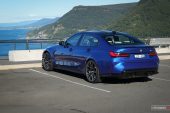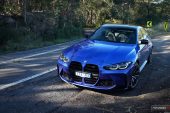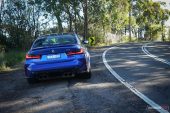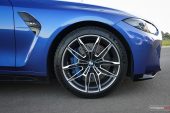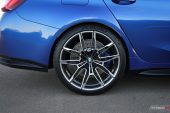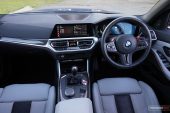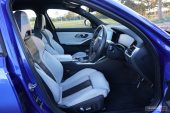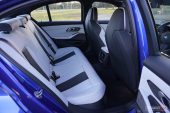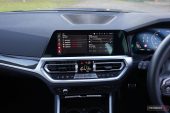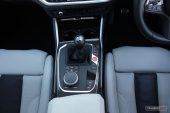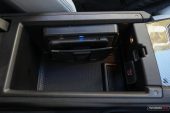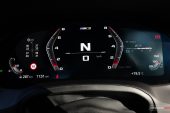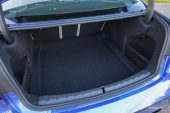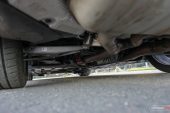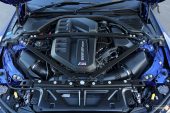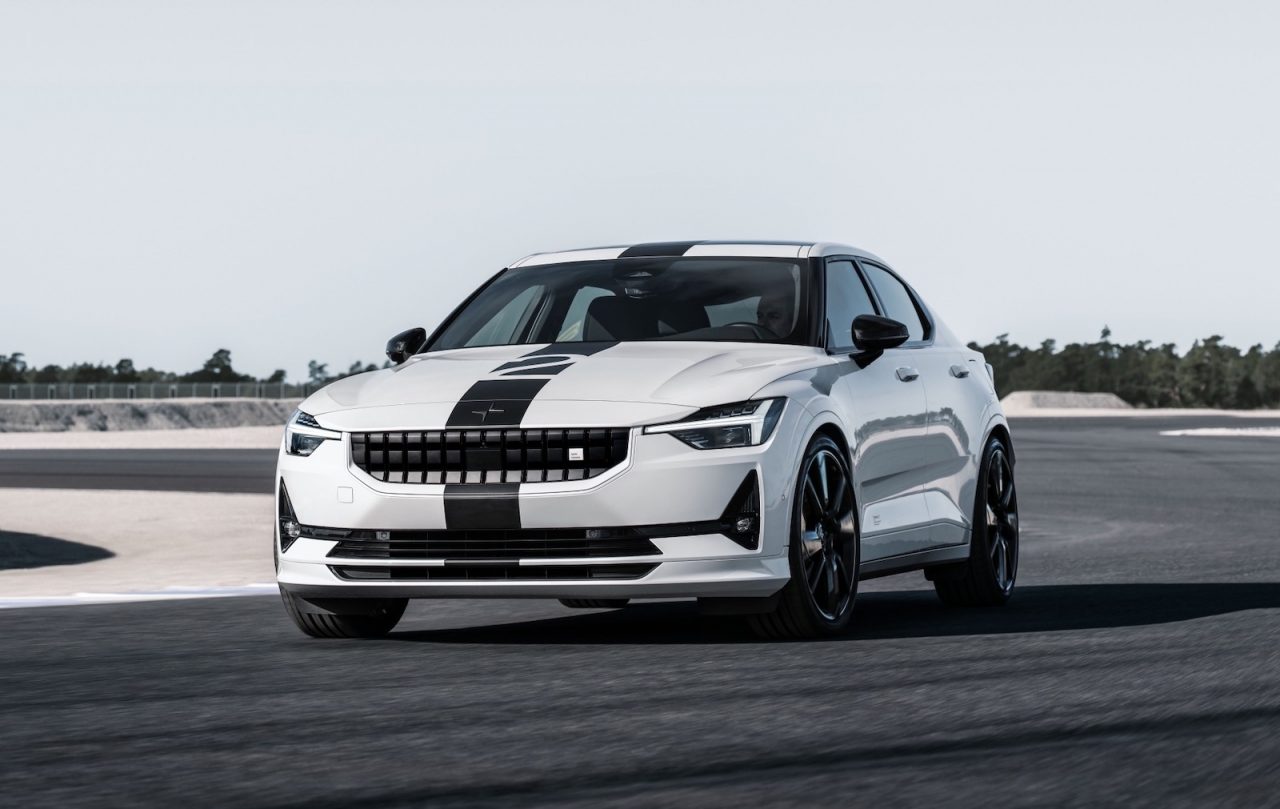Like many driving enthusiasts out there, we have an uncontrollable desire for anything with an M3 badge on it. So when we heard BMW Australia was going to introduce a manual version of the latest model, our hearts melted. Is it the wet dream we hoped for?
This is the new entry model of the latest G80-generation M3. It comes with less power than the existing M3 Competition and is not available with switchable xDrive all-wheel drive like the Competition. It comes with a six-speed manual as standard. In fact, the eight-speed auto is not even an option (in Australia, overseas specs might be different).
Prices did start from $144,900 initially but now we see the figure has jumped to $150,500 (MRLP) in recent times, likely due to the ongoing supply constraints facing most of the industry. That’s quite a decent chunk cheaper than the M3 Competition (auto only) which now starts from $160,500. You can go a step further with the M3 Competition xDrive (with switchable AWD/RWD) from $166,500.
2022 BMW M3 manual – THE SPECS
[column width=”47%” padding=”6%”]Engine: 3.0-litre twin-turbo inline-six
Output: 353kW@6250rpm / 550Nm@2650-6130rpm
Transmission: Six-speed manual
Drive type: Rear-wheel drive, active differential
Wheels: F: 19×9.5, 275/35 R: 20×10.5, 285/30
ANCAP: Not tested (regular 3 Series 5 stars)
Tare weight: 1668kg
Power-to-weight: 4.72:1 (kg:kW)
Official fuel economy: 10.8L/100km
Economy during test: 11.4L/100km[/column] [column width=”47%” padding=”0″]Fuel capacity/Type: 59L/98 RON
Power efficiency: 32.68kW:L/100km
0-60km/h: 2.52 seconds*
0-100km/h: 4.39 seconds*
0-200km/h: 14.17 seconds*
60-110km/h: 2.68 seconds*
1/4 mile: 12.55 seconds at 186.8km/h*
Max acceleration: 1.057g
100-0km/h braking: 2.75 seconds at 35.98 metres*
Max deceleration: -1.285g
Decibel at idle (/Sport mode): 48/55*
Peak decibel at 60-100km/h: 90/94*
Priced from: $150,500[/column][end_columns]
* Figures as tested by PerformanceDrive on the day. Factory claims may be different
2022 BMW M3 manual – THE PACKAGE
Firstly, how good is this particular colour combination, called M Portimao Blue. It reminds us of the old Estoril Blue E36 M3 of the 1990s. I used to own one many moons ago, with the same bone/oyster interior as the new model featured here. So for me personally this is both an absolute treat and a walk down memory lane.
Even without Competition pack you get heaps of those fashionable black highlights, such as the very cool lip spoiler on the boot, lower body skirting, black side mirrors and those big grilles at the front. Mainly the rear badge is the giveaway, which is featured in traditional chrome rather than black. We’re still not convinced these grilles are a good direction, but now instead of holding a deep inner hatred against them we simply try to ignore them.
Being the base model means it is rear-wheel drive. And it comes with the lower-tune version of the 3.0-litre twin-turbo inline-six engine, producing 353kW and 550Nm, down from 375kW and 650Nm in the Competition. However, the active M differential, adaptive M suspension, and a set of M compound high-performance brakes come standard.
Staggered-size M forged wheels come standard too, with 19s on the front and 20s on the back, wrapped in very sticky 275/35 front and 285/30 rear Michelin Pilot Sport 4 S tyres.
Inside, this oyster leather trim with black sections might get dirty over time, but we think it does help bring some excitement and pizazz to the cabin. It feels special in here. Carbon fibre is used for various highlights, such as the centre console and steering wheel, helping to remind you this is not an ordinary 3 Series.
Passenger comfort is great, and these sporty seats feature suede-like sections in the middle to grip you in. Headroom and legroom levels are pretty much the same as the regular 3 Series, in that, it’s about average for this class. The big front seats do seem to take up some room when sitting in the back, but it could be just a perception thing. Climate vents and temp control come standard in the back, along with charging ports.
Likewise, boot space is almost the same as the 3 Series, with 480 litres, compared with 500L in the regular sedan. Some handy storage pockets are included on the sides, and you can flip down the rear seats using tabs under the rear windscreen for more room.
We guess, the most important element about the M3 cabin is that it is very similar to the 3 Series; an executive premium sedan. And that’s always been a key attribute to the M3 nameplate. As much as the underpinnings are honed on the track and inspired by motorsport, the inside is pretty much just as practical and everyday-liveable as its foundational sibling.
This base model gets BMW’s now-superseded 7.0 operating system running a 10.25-inch main touch-screen and a 12.3-inch digital screen for the gauge cluster with M Mode display theme options. However, BMW global did announce a switch to its latest 8.0 arrangement for the M3 and M4 last week, as seen in the i4 and iX. But it isn’t likely to arrive in Australia until later this year (given that production commences in July).
Even so, the 7.0 system offers comprehensive functionality, with BMW ConnectedDrive providing remote control and status checks from your phone, as well as satellite navigation, digital radio, a really good wireless phone charging cradle in the centre console, and even a 16-speaker Harman/Kardon surround sound system, with Android Auto and Apple CarPlay.
We continue to enjoy using BMW’s iDrive hand controller on the console, as it just seems like a very natural and intuitive system that also helps to keep your eyes on the road. The screen can be touch-operated as well though.
Build quality and materials are superb, with no rattles or squeaks to report. The dash and console layout is quite typical of modern BMWs, in that, it’s not overly showy or flamboyant yet it looks special enough to stand out as a proper luxury product. Interestingly, this test car is not fitted with any options. So everything you see here comes as standard.
There are plenty of customisation possibilities as well, so you can set up a more exclusive package if you want to. The full M Carbon Package ($26,000) adds carbon fibre to the side mirrors and rear spoiler, while introducing carbon fibre bucket seats in the front and carbon ceramic brakes. If that’s too over the top, buyers can specify singular carbon items as well. And in something we don’t see often, you can get different colour brake calipers at no extra cost! It’s unbelievable, we know. As standard you get blue calipers, but black or red calipers are available at no extra cost. Are you seeing this, Ferrari, Lamborghini and Porsche?
2022 BMW M3 manual – THE DRIVE
We’re not sure what it is exactly but this manual model feels like it rides nicer than the Competition models. We have checked the specs and we can’t see any difference in the suspension setup. Although, feel free to correct us if we’re wrong. BMW simply notes the standard model as coming with ‘Adaptive M Suspension’, which is also listed as a feature on the Competition models. Both are also listed as offering 120mm of ground clearance.
Either way, it rides surprisingly well in the default Comfort mode. Obviously this is a sports sedan so it’s not as plush as the regular 3 Series, or indeed some of the more luxury-focused rivals like the Lexus ES. But we think it is acceptable for day-to-day use. And that’s another trait of an M3; it needs to be practical enough to be suitable for everyday driving. We think this certainly is. There seems to be a decent range of suspension compression for bigger bumps, however, the thin-profile tyres and stiff suspension mounts likely influence road roar which can be heard on some surfaces.
In the Sport mode the suspension becomes really firm. Too firm for most Australian roads. To be honest, I actually preferred to leave all driving modes in the default setting. With the powertrain set to Sport Plus the throttle sensitivity becomes really sharp and responsive. For me, almost too sharp for the road. In the standard setting – which is actually called Efficient for the powertrain section – it feels more natural and like an older generation model in my opinion. You still have plenty of power and response so you don’t have to worry about missing out. It just means you need to push the pedal further to access more power. Again, this seems more natural in our opinion.
BMW does offer two buttons on the steering wheel – M1 and M2 – that allow you to preset the different parameters of adjustment available, so you can quickly activate your ideal setup. You can even program the automatic stop-start system and traction control settings. We had M1 set up to be the most hardcore configuration, with traction control completely off and all elements in their most aggressive modes, while the M2 button we had as everything in Comfort but with stop-start turned off.
With the exhaust in the normal mode (of the two available) you get to hear some traditional BMW six-cylinder sing from the engine end. Whereas in the sport mode the exhaust barks and pops, somewhat overshadowing the mechanical sounds from the engine up front.
The handling is, as you might imagine, very precise and engaging. It can rail around corners at high speeds without a sweat. Control over bumps is also exceptional, with enough suspension movement capable soaking up Australia’s shoddy backroads. Over some bumps, with the traction off, it can start to light up the rear tyres if you leave the power down. It’s very exciting, and keeps you on your toes.
We think the steering isn’t quite as organic as past generations, with a more linear feel as opposed to a mechanical and progressive feel. But, compared with its modern rivals the steering has a level of distinctive BMW character about it. In a good way.
As for the engine, this features the same 3.0-litre twin-turbo inline-six ‘S58’ as the Competition. Power is detuned, as mentioned, and peak power is achieved at the same 6250rpm (a shame it’s not as high-revving as its predecessors). Peak torque availability is spread wider in this tune though compared with the Competition, with the window between 2650-6130rpm rather than 2750-5500rpm. It basically means this can pull through from any revs while maintaining very strong torque and response in most gears.
It’ll happily drive around roundabouts in third gear, for example, and surge with significant force right up to highway speeds from around 40km/h, in the same gear. The turbocharging system peaks at about 15psi, according to the on-dash display. That’s down from about 26psi that we witnessed in the Competition model. With lower boost though it does tend to rev up quicker. In fact, you’d have to be a very sensitive person to notice any turbo-lag at all.
Across the usual acceleration sprints we timed a best 0-100km/h in 4.39 seconds, 0-200km/h in 14.17 seconds, and the quarter mile in 12.55 seconds at 186.8km/h. That initial time is a bit down compared with BMW’s official claim of 4.2 seconds, however, being a manual, you could test this car all day and get different results each time. It’s all about finessing the clutch and getting in very smooth but very swift gear changes.
We did our best, and we think most keen drivers could achieve similar results as ours. We’re not ruling out the possibility of quicker times, though. Also keep in mind we test vehicles on a private road that is laid with pretty ordinary bitumen. A smooth race track could provide more traction off the line.
You probably notice these figures are slower than the auto Competition. Understandably. But with the manual it is such a joy to drive in normal and moderate tempo conditions, with a lovely shift action creating a unique experience altogether. The clutch feels good and intuitive, and honestly, you won’t miss the extra power. It has no trouble spinning up the rear tyres and drifting as it is.
The ‘power-efficiency’ ratio of this powertrain is an excellent 32.68kW:1L/100km. It’s a confusing calculation, we know, but we like to include it in our spec box above. It basically gives us/you an instant indication of how efficiently an engine is at producing its power. In the case of this car, an official average fuel consumption (which is a standardised test undergone by pretty much all models) of 10.8L/100km isn’t very high at all considering the engine has the ability to generate up to 353kW. If the engine produced only 150kW, for example, yet consumed 10.8L/100km on the official test cycle that would not be very efficient at all. Basically, any vehicle that spits out a ratio of over 30kW:1L/100km is outstanding in our books.
In the real world we experienced a fuel consumption average of 11.4L/100km, involving a mixture of driving conditions over a span of around 900km. This included a heap of performance tests to try and discover its acceleration potential, and of course lots of fun driving along some mountain roads (all important work, obviously).
2022 BMW M3 manual – THE VIDEO
2022 BMW M3 manual – THE VERDICT
What a dream machine. Seriously, to see such a tight, track-ready sports sedan with a manual transmission and desirable twin-turbo inline-six engine on the market in this day and age is a real treat. Cars that are even remotely similar to this are extremely rare these days. Our advice is, if you’re interested (or even slightly interested), jump on it now. We would if we could. And we’d pick this exact model and colour configuration.
Desirability aside, the latest M3 offers exceptional performance and driving dynamics that are accessible, almost regardless of your driving skill thanks to its adaptability and the versatility of the driving modes. Paired with its reasonable fuel economy and in-car practicality, the latest version definitely continues the M3 legacy with pride. This can be driven not only at the track – setting blistering times – but to and from the track, and to work during the week. For driving fans, it doesn’t get much better.
[column width=”47%” padding=”6%”]PROS:
– So good to see the manual live on; nice slick shift as well
– Broad engine capability covers both low-rev city driving and high-revving fun
– Nice interior fit and finish
– Pretty much just as practical as regular 3 Series inside
– Awesome sound and performance, even with lower 353kW tune
[/column] [column width=”47%” padding=”0″]CONS:
– Trying to ignore those front grilles
– Manual transmission is slower, and auto not available on base spec
– Recent price rise by around $5000[/column][end_columns]
As always, if you’re thinking about buying a new car don’t forget to click here to speak with our car buying specialists.
